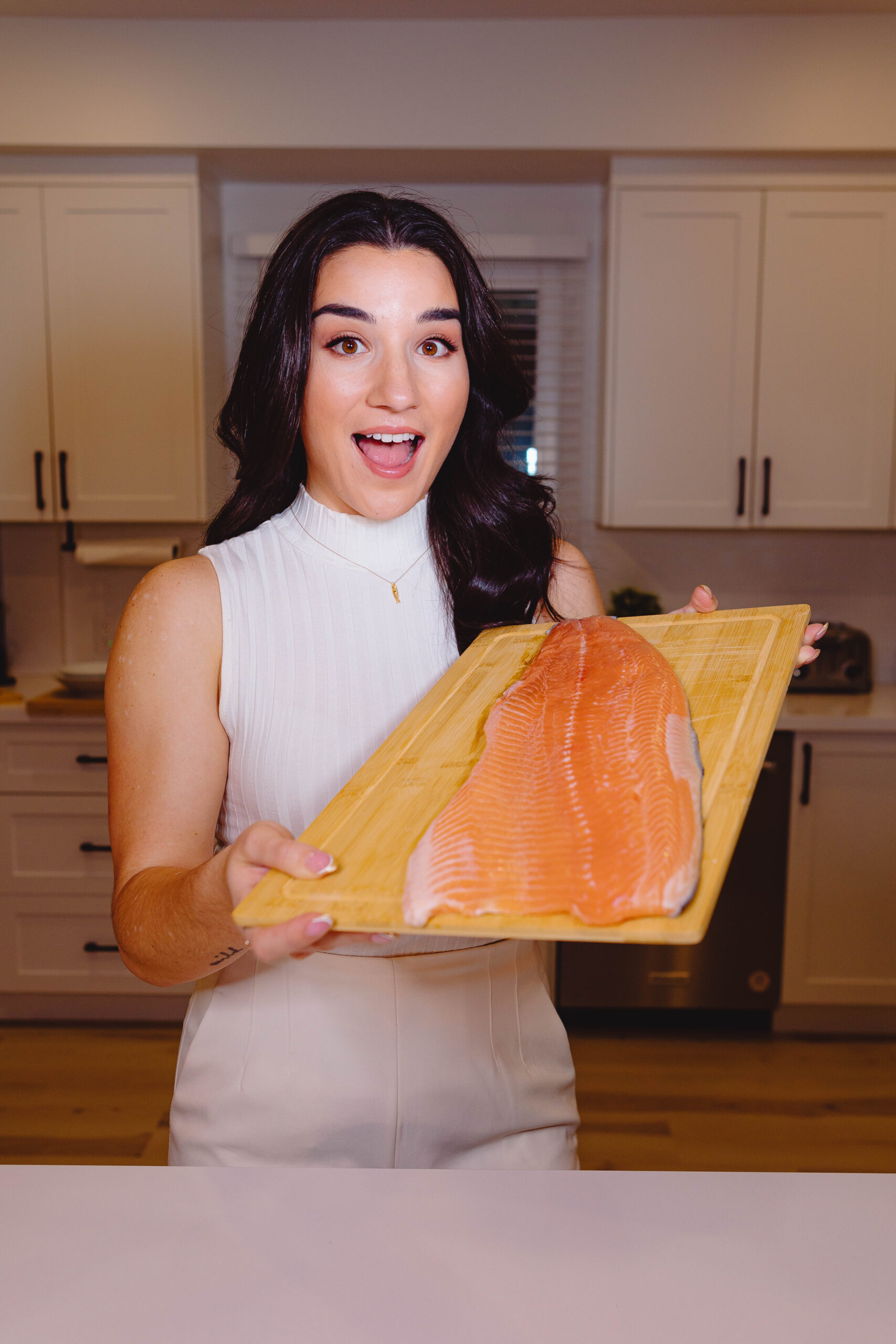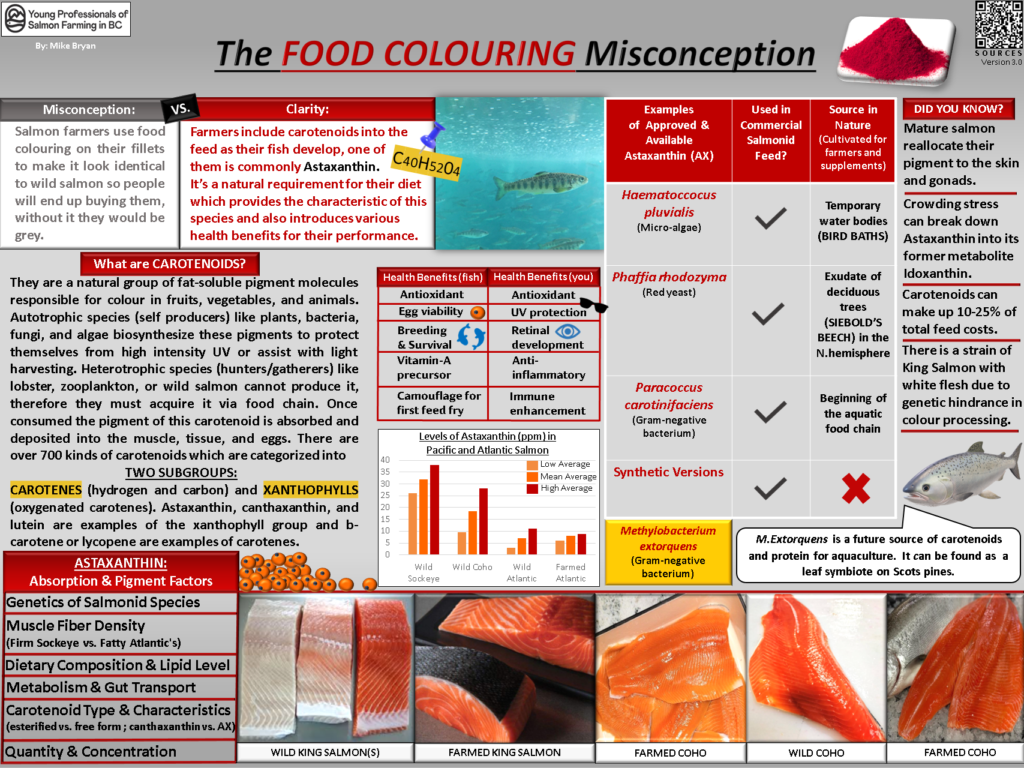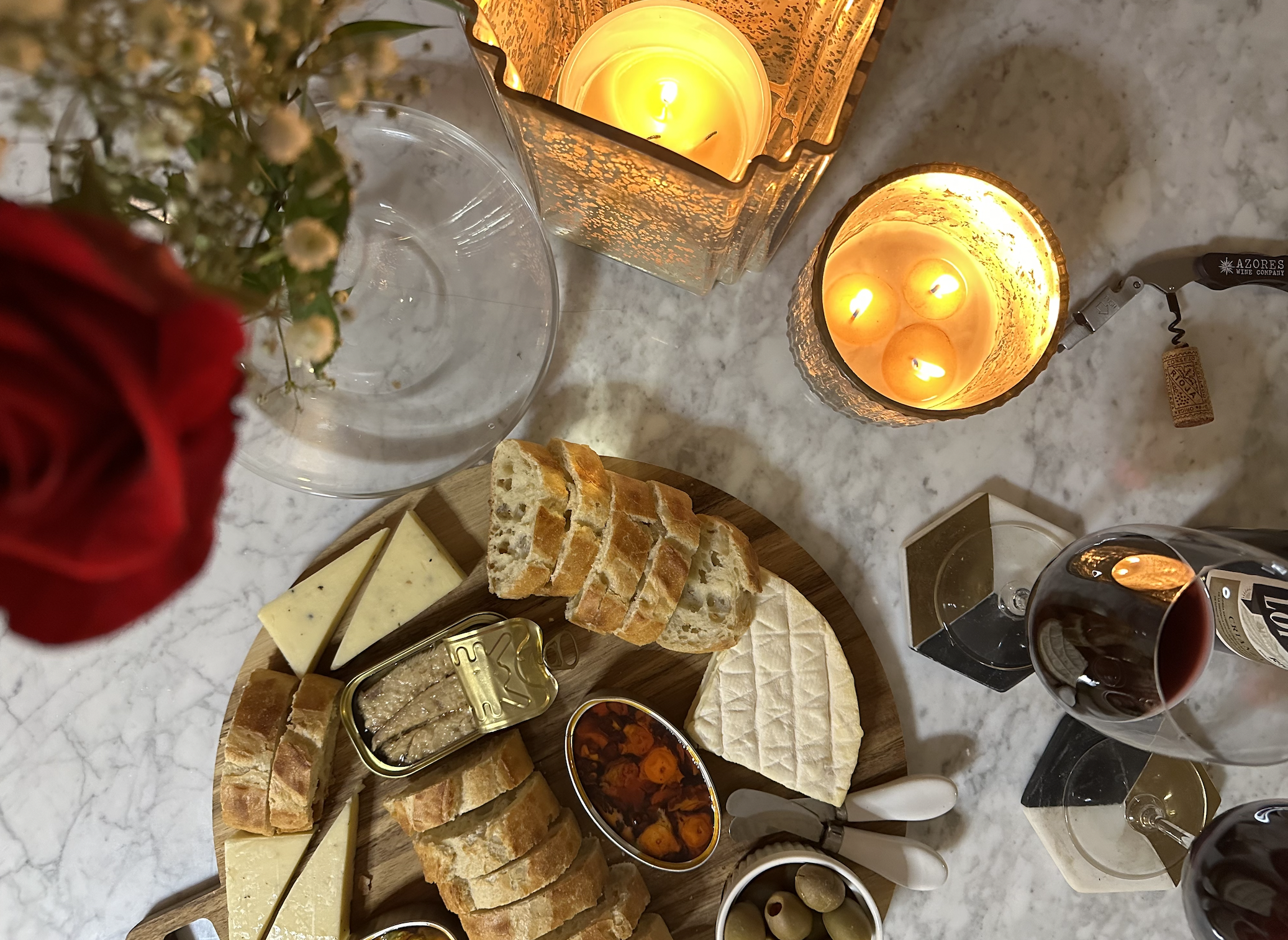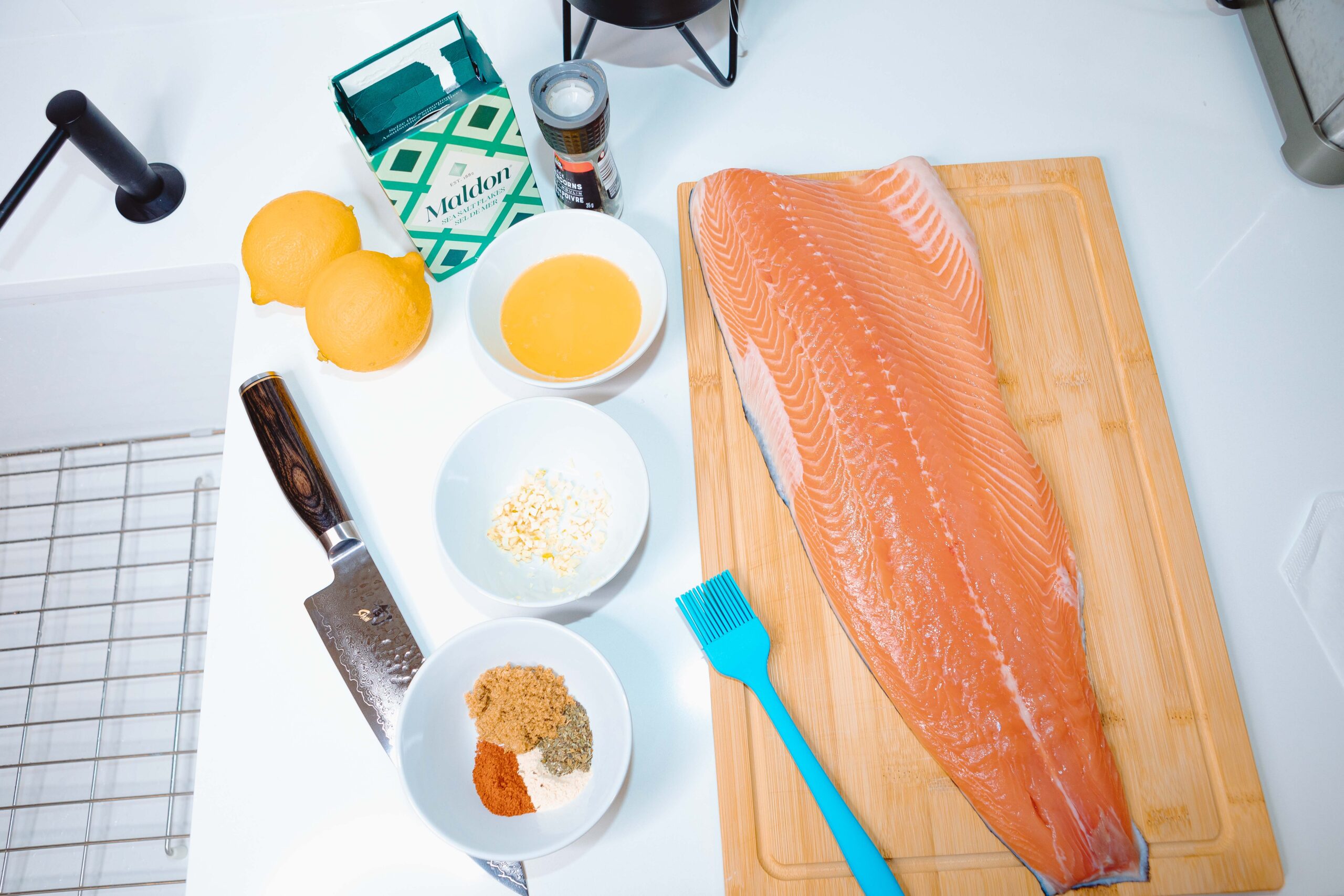
How do farmed salmon REALLY get their colour?
The colour of salmon flesh has been a widely debated and frankly, a widely misunderstood topic for quite some time.
With the increasing importance of farmed seafood (it now accounts for more than half the seafood we eat!) and the rapid expansion of aquaculture across the globe, we are all talking about aquaculture more and more.
And understandably so, asking a lot of questions about this industry, which is new to many.
Unfortunately, not all of the conversations that are being facilitated about aquaculture are productive ones. There are a lot of myths and misconceptions being perpetuated today, even after being widely debunked.
Now as a scientist who’s built a platform dedicated to democratizing information and maintaining scientific integrity, I’ve done my fair share of aquaculture debunking.
But one topic we haven’t addressed yet is the colour of salmon flesh.

In a grocery store seafood case, one can easily spot varying hues of reds, oranges, and pinks among different salmon pieces.
It’s often falsely claimed that the reason for this difference in colour comes down to the harvest method: if a salmon is farmed it’s light pink and if it’s wild-caught it’s bright red. But this isn’t necessarily true.
In fact, both wild and farmed salmon get their colour the exact same way: through their diet.
Let’s break it down.
What colour are salmon?
Salmon flesh actually starts off as a very pale almost white colour and gets those pink and orange and vibrant red hues that salmon is so famous for through its diet.
Salmon eat a lot of krill and invertebrates that contain astaxanthin which is a pigment molecule that gives salmon its colour. It’s also a powerful antioxidant that protects important fats in the flesh from degrading. It also supports the immune system and cell respiration.
Salmon that are able to eat and process lots of astaxanthin have a very vibrant red colour. However, not all salmon can process the molecule that easily which is why we see varying shades of red, orange, and pink in their flesh.
In the wild, 1 in 20 Chinook (also known as King) salmon, found in the northwest Pacific, is unable to process Astaxanthin which results in its flesh staying white.
Why are some salmon bright red and others pale pink?
Hint: it has nothing to do with the salmon being farmed or wild caught. The vibrancy of salmon’s flesh depends on a variety of different factors.
One of those factors is the salmon’s ability to process astaxanthin. Some fish can simply process the molecule better, which is what gives those fish a really bright red flesh. Others, just can’t process it as well, due to nothing else other than a fluke in anatomy (like the white Chinook!)
Other factors can affect the vibrancy of the flesh including the availability of krill and certain species. If there’s not enough astaxanthin-containing food around, the salmon won’t be able to get enough of the pigment, leading to a paler colour.
Stress can also impact the levels of astaxanthin. If salmon are under duress either in the wild, or when being handled in a farmed setting, their ability to process astaxanthin can be negatively impacted.
Farmed salmon feed
So now we know that in the wild, salmon get their colour from eating astaxanthin-rich species like krill. In a farmed environment, salmon still get their colour from their diet, but instead of eating krill, astaxanthin is supplemented in their diet.
Supplementing the salmon feed is more sustainable, as it helps to reduce aquaculture’s reliance on wild fish and ensure the industry isn’t contributing to overfishing.
Astaxanthin supplemented in salmon’s feed pellets acts as a vitamin the same way we supplement our own diets. For example, I can get vitamin B12 through food sources, or I can take a pill to supplement my diet with B12. This is essentially what’s happening with salmon feed and astaxanthin.
And astaxanthin even has health benefits – not only for salmon, but for humans as well! Astaxanthin is actually commonly sold as a nutritional supplement in health food stores for its anti-inflammatory benefits.
Why do packages say “colour added”?
This is a question I get asked a lot as some of you might notice that farmed seafood packages in grocery stores say “colour added”, leading to the belief that salmon are being “dyed” in farmed settings.
Once again, this is not true. The “colour added” is on the label in accordance with FDA guidelines (in the United States). In some farmed settings, a synthetic version of astaxanthin is used and the FDA requires a disclaimer to be on packaging when such supplementation is occurring.
Once again, this supplement is a perfectly safe and healthy vitamin that actually has tremendous health benefits.
I hope that this post has cleared up any concerns that you might have had about farmed salmon. If you still have more questions, shoot me a message on social media and let’s chat!
For more detailed information, check out this helpful infographic by Mike Bryan of the Young Professionals of Salmon Farming in BC.




